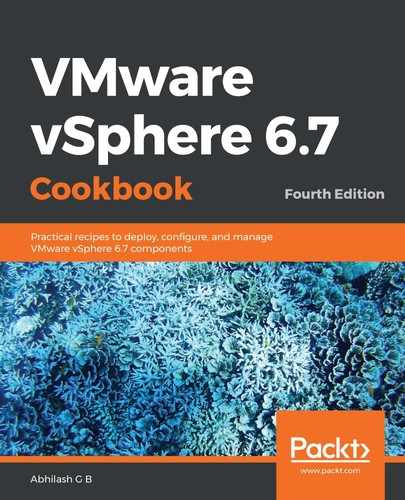This method calculates the amount of cluster resources that have to be reserved as failover capacity, based on the number of host failures that the cluster can tolerate. However, unlike the cluster resource percentage method, here, admission control uses slot sizes to calculate the current failover capacity. A slot represents a combination of the CPU and memory resources that are to be allocated to virtual machines. The number of slots that a virtual machine will require depends on its resource requirements.
Now that we know what slots are, let's review how HA determines slot sizes. HA picks the largest CPU and memory reservation values as slot sizes. If no reservations are used, a value of 32 MHz and 100 MB is used. Once the slot sizes are determined, the number of slots that each of the ESXi hosts in the cluster can hold is also determined. It then picks the hosts with the largest number of slots as failover hosts and starts determining the current failover capacity of the cluster. If the current failover capacity of the cluster is less than the configured failover capacity, then it is considered an admission control violation. This will be better understood with an example.
For instance, let's assume that your current cluster status, in terms of the number of hosts, virtual machines, and their resource reservations, are as shown in the following diagram:

Here, the largest memory reservation by a virtual machine is 4 GB, and the vCPU is 2 GHz. The slot size is (4 GB, 2 Ghz).
Now, let's calculate the slot capacity per host:
- Host A: Three memory slots and two vCPU slots
- Host B: Two memory slots and two vCPU slots
- Host C: Two memory slots and two vCPU slots
Since ESXi A has the largest set of slots, it is taken out of the equation. So, with just ESXi B and ESXi C, we only have four slots in total.
Now, let's take a look at the slot sizes that are required by the virtual machines:
- VM01: One slot
- VM02: One slot
- VM03: One slot
- VM04: One slot
- VM05: One slot
We need a total of five slots to power-on all of the VMs, but we have only four. Hence, the current failover capacity is less than the configured failover capacity of one. Therefore, you will need to power-off one of the VMs in order to enable admission control. Once admission control is enabled, if you try to power-on the VM, then it won't let you, since it violates the failover capacity requirement.
When you define the slot policy, it is recommended that you cover all powered-on virtual machines in almost all cases. The following screenshot shows the options that are available with the powered-on VMs slot policy:

The fixed slot size method can come in handy when, for instance, you have a VM with a very large reservation value, which can affect the slot size.
